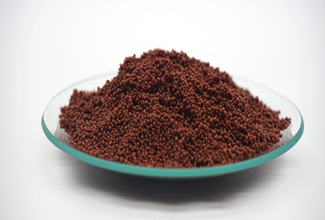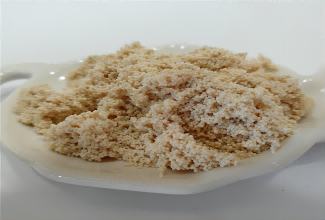Ion Exchange Resins for Water Purification
Ion exchange resins are widely used in water purification, primarily to remove or replace specific ions from water to improve its quality. Below is an elaboration on ion exchange resins from the perspective of their applications and functions:
Water Softening
Application: One of the most common uses of ion exchange resins is for softening hard water by removing calcium (Ca²⁺) and magnesium (Mg²⁺) ions that cause hardness.
Function: Using cation exchange resins, typically in the sodium (Na⁺) form, these resins can exchange calcium and magnesium ions in the water with sodium ions, thereby reducing water hardness and preventing scale formation in pipes and equipment. For example, Comcess 001*7 Cation Exchange Resin.
Desalination and Pure Water Production
Application: In industries and laboratories, to produce high-purity water such as deionized or ultrapure water, all ions must be removed from the water.
Function: By combining cation exchange resins with anion exchange resins, it's possible to remove both positive and negative ions from the water, resulting in very low conductivity levels suitable for electronics manufacturing, pharmaceuticals, and other industries. An example is Strong Acid Cation Exchange Resin for water treatment.
Wastewater Treatment
Application: Ion exchange resins can be used to remove pollutants such as heavy metals and other harmful substances from wastewater.
Function: Specific types of chelating resins can selectively adsorb heavy metal ions like copper (Cu²⁺), nickel (Ni²⁺), zinc (Zn²⁺), etc., removing them from wastewater, aiding environmental protection and potentially enabling resource recovery.
Removal of Specific Contaminants
Application: Besides the aforementioned uses, ion exchange resins can also target the removal of certain contaminants, such as nitrates, fluorides, arsenic compounds, etc.
Function: Depending on the nature of the pollutants, appropriate ion exchange resins can effectively reduce the concentration of these substances in water to meet drinking water standards or other water quality requirements. Examples include
Copper Removal Resin
Arsenic Removing Chelating Resin
Regeneration Capability
Application: A significant feature of ion exchange resins is their regeneration capability, allowing them to maintain efficient ion exchange performance after multiple cycles of use.
Function: Once the exchangeable ions on the resin are fully replaced, the resin can be restored to its original state by flushing it with an appropriate chemical solution. For instance, a saltwater solution can regenerate saturated softening resin back to its sodium form.
Through their unique physicochemical properties, ion exchange resins play a crucial role in the field of water purification. Whether it's softening household water, producing industrial-grade ultrapure water, or environmentally friendly wastewater treatment, ion exchange technology offers effective solutions. With advancements in technology, the development of new high-performance resins continues to expand the potential applications within this field.
Water Softening
Application: One of the most common uses of ion exchange resins is for softening hard water by removing calcium (Ca²⁺) and magnesium (Mg²⁺) ions that cause hardness.
Function: Using cation exchange resins, typically in the sodium (Na⁺) form, these resins can exchange calcium and magnesium ions in the water with sodium ions, thereby reducing water hardness and preventing scale formation in pipes and equipment. For example, Comcess 001*7 Cation Exchange Resin.
Desalination and Pure Water Production
Application: In industries and laboratories, to produce high-purity water such as deionized or ultrapure water, all ions must be removed from the water.
Function: By combining cation exchange resins with anion exchange resins, it's possible to remove both positive and negative ions from the water, resulting in very low conductivity levels suitable for electronics manufacturing, pharmaceuticals, and other industries. An example is Strong Acid Cation Exchange Resin for water treatment.
Wastewater Treatment
Application: Ion exchange resins can be used to remove pollutants such as heavy metals and other harmful substances from wastewater.
Function: Specific types of chelating resins can selectively adsorb heavy metal ions like copper (Cu²⁺), nickel (Ni²⁺), zinc (Zn²⁺), etc., removing them from wastewater, aiding environmental protection and potentially enabling resource recovery.
Removal of Specific Contaminants
Application: Besides the aforementioned uses, ion exchange resins can also target the removal of certain contaminants, such as nitrates, fluorides, arsenic compounds, etc.
Function: Depending on the nature of the pollutants, appropriate ion exchange resins can effectively reduce the concentration of these substances in water to meet drinking water standards or other water quality requirements. Examples include
Copper Removal Resin
Arsenic Removing Chelating Resin
Regeneration Capability
Application: A significant feature of ion exchange resins is their regeneration capability, allowing them to maintain efficient ion exchange performance after multiple cycles of use.
Function: Once the exchangeable ions on the resin are fully replaced, the resin can be restored to its original state by flushing it with an appropriate chemical solution. For instance, a saltwater solution can regenerate saturated softening resin back to its sodium form.
Through their unique physicochemical properties, ion exchange resins play a crucial role in the field of water purification. Whether it's softening household water, producing industrial-grade ultrapure water, or environmentally friendly wastewater treatment, ion exchange technology offers effective solutions. With advancements in technology, the development of new high-performance resins continues to expand the potential applications within this field.
Related Products
-
 001X7 Cation Exchange ResinIonic form:Na+Appearance: Claybank to tan transparent spherical particle.The degree of crosslinking : 7%.
001X7 Cation Exchange ResinIonic form:Na+Appearance: Claybank to tan transparent spherical particle.The degree of crosslinking : 7%. -
 Arsenic Removing Chelating Resin To Extract Heavy Metals Removal Arsenic Removal Nitrate Ion Exchange ResinAppearance: Red brown to brown beadsIonic form:[R-FeO (OH)]+Volume complete exchange capacity(mmol/ml):≥2.0
Arsenic Removing Chelating Resin To Extract Heavy Metals Removal Arsenic Removal Nitrate Ion Exchange ResinAppearance: Red brown to brown beadsIonic form:[R-FeO (OH)]+Volume complete exchange capacity(mmol/ml):≥2.0 -
 Copper Removal ResinPurity:99.9%Appearance:Milky to light yellow opacity spherical beadsMoisture content (%):48.00-60.00
Copper Removal ResinPurity:99.9%Appearance:Milky to light yellow opacity spherical beadsMoisture content (%):48.00-60.00
Message

